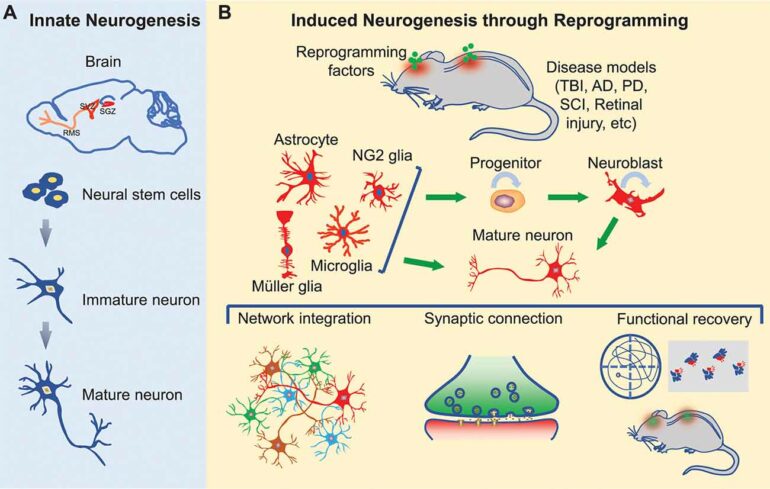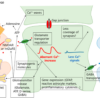A study published in the journal Stem Cells Reports reveals that a cellular reprogramming methodology allows the creation of neural networks that reproduce unique characteristics of human cells—different to those obtained from rodent cells—with temporary dynamics similar to human brain development.
Therefore, cellular models based on reprogrammed human cells could boost the development of new efficient therapies in the fight against neuropathies and, at the same time, reduce the use of experimentation on animals in the laboratory.
The study was led by researcher Daniel Tornero Prieto, from the Faculty of Medicine and Health Sciences, the Institute of Neurosciences of the UB (UBNeuro) and IDIBAPS. Researchers Jordi Soriano Fradera and Estefanía Estévez-Priego, from the Faculty of Physics and the UB Institute of Complex Systems (UBICS) and Zaal Kokaia, from the University of Lund (Sweden), among others, have also participated in the study.
Cellular reprogramming to overcome the limits of animal models
Despite sharing a large part of our genome with most mammals, “there are considerable differences between our cells and those of other species such as rodents, which are used as animal models for most pathologies,” notes Daniel Tornero, from the UB Department of Biomedicine.
“In particular there are very significant differences in the brain, especially in terms of organization and connectivity. This makes our cognitive capacities so different and it also explains why the defects that give rise to the pathologies that affect our brains are not reproduced in the same way in the brains of these animals.”
The limits of animal model studies could be overcome by cell reprogramming technology, based on the induction of human pluripotent stem cells (hiPSCs), a method developed by Shinya Yamanaka in 2007. This is a methodology that can generate cultures of any cell type from cells of an adult person—relatively simply, efficiently and without relevant ethical considerations—with great potential for clinical application in cell therapy and regenerative medicine.
As part of the study, the team applied the technique of intracellular calcium level recordings to compare the properties of neuronal cultures generated with cell reprogramming technology from human cells with those obtained from rodent and human brains. This technique provides an indirect measure of the neuronal activity: during the nerve impulse, which is transmitted from one neuron to the next, calcium levels rise in a characteristic way and can be recorded by intracellular calcium sensors.
This study system allows high-resolution monitoring of neuronal activity dynamically throughout the life of the culture. The experimental strategy is completed with the use of special plates that allow the tracking of the same group of cells by means of marks incorporated into the culture surface, a technique that minimizes variables and generates more reliable and valuable results for the study of neural networks.
Differences between different neural circuits
For the first time, the team has been able to study and differentiate the characteristics of the different neuronal circuits generated—biological structures that at first glance might appear identical.
The results show that neurons of human origin behave differently when it comes to generating neural circuits from a functional point of view. These characteristics may partly explain the problems associated with animal models used to study human brain pathologies.
“First of all, what strikes us most is the time scale that determines the generation and maturation of the neural network. The cultures derived from human cells show a rich and gradual dynamic behavior, so that the maturation process of the neuronal network generated is clearly observed from 20 days to 45 days of culture,” says Daniel Tornero. “During this period, and thanks to the different descriptors that we have developed, we have been able to analyze how the neural network gains in complexity over time, as the human neurons become more and more connected to each other,” the researcher adds.
In addition, human neurons are able to make much longer connections within the culture, a property that would be determined by their biology, since the human brain is much larger than that of rodents.
“However, neural circuits generated from rodent cells show monotonic behavior from very short times, with little change throughout their evolution,” says Tornero.
Safe protocols and compatible cell banks
Cellular models based on reprogrammed human cells are emerging as a relevant intermediate step between animal studies and clinical application. The generation of these cellular models for the study of diseases based on reprogrammed human cells is well established in pre-clinical studies—2D cultures or organs-on-chip systems (OoCs)—and more recently, in the generation of 3D systems based on the use of biomaterials, organoids or bioprinting.
In regenerative medicine, the application of this technology in cell therapy strategies reveals a great potential and there are many clinical trials on various pathologies (type 1 diabetes, myocardial infarction, spinal cord injury, macular degeneration, Parkinson’s disease, etc.). Establishing safe and reliable protocols and generating cell banks compatible with the different allogeneic groups that exist in the population are some of the most ambitious challenges in this field of study.
“These new approaches can be very valuable to validate different therapies preclinically, especially when studying pathologies that affect complex processes based on the organization of neuronal circuits (neurodevelopmental diseases, autism spectrum disorder, neurodegenerative pathologies, etc.,” says Daniel Tornero.
“In addition, cell reprogramming based on the induction of human pluripotent stem cells would make it possible to generate patient-specific models and, using gene editing tools (such as the CRISPR/Cas9 technique), it would be possible to obtain control cells in which the mutation that causes the pathology is corrected,” the researcher concludes.
More information:
Estefanía Estévez-Priego et al, Long-term calcium imaging reveals functional development in hiPSC-derived cultures comparable to human but not rat primary cultures, Stem Cell Reports (2022). DOI: 10.1016/j.stemcr.2022.11.014
Provided by
University of Barcelona
Citation:
Generating human-like neural networks via cellular reprogramming (2022, December 22)



